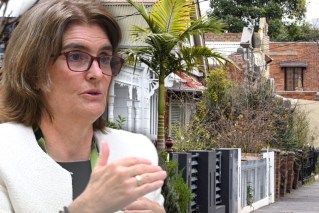Annual growth in living costs nears double digits as prices surge for insurance, food and housing

Living costs experienced the biggest annual jump since 1991. Photo: Getty
Higher prices for insurance, food and housing stung Australian households in the last quarter, although the worst of the cost-of-living crisis looks to be over.
Employees have endured close to double-digit annual growth in living costs as tracked by the national statistics bureau – the largest rise of all household types and the biggest jump since 1991.
Over the quarter, housing was one of the biggest contributors to living expenses for all households, with a mismatch between supply and demand pushing up rents.
Insurance premiums also grew across house, home contents and motor vehicle products, with meals out, takeaway and fruit and vegetables largely responsible for the jump in food-related expenses.
The Australian Bureau of Statistics’ living index, which measures changes in mortgage interest unlike the consumer price index released last week, varies between household types due to different spending habits.
Living costs are still going up for all households, but the annual pace of growth stabilised for workers and has started to cool for pensioners, welfare recipients and self-funded retirees
For employers, who are likely to still be paying off mortgages and incurring higher borrowing costs, annual living costs stuck at 9.6 per cent annual growth for a second quarter in a row.
All other income groups experienced a slower pace of annual growth, but still above the consumer price index.
Workers are bearing the brunt of higher interest rates, with the index recording a 91.6 per cent increase in mortgage interest charges over the year to June.
“This was up from a 78.9 per cent annual rise in the March 2023 quarter reflecting the impact of the Reserve Bank of Australia’s cash rate rises and the rollover of some expired fixed-rate mortgages to higher rate variable mortgages,” the ABS said.
Borrowers may have seen the last of the interest rate rises, with the central bank opting to keep the cash rate on hold for the second month in a row in August.
There could be further mortgage pain to come, however, with the Reserve Bank keeping the option to hike again if needed.
Plus, most variable borrowers have not yet paid for rate hike No.12 doled out in June due to the lag time between cash rate movements and money coming out of bank accounts.
RateCity research director Sally Tindall urged borrowers to hunt around for a better deal if they were struggling.
Variable rate mortgage holders should be looking for a rate under 5.75 per cent, with a handful of lesser-known lenders offering rates below 5.5 per cent.
The latest lending data, released by the ABS on Tuesday, showed refinancing rates dipping slightly but remaining elevated as borrowers continue to switch lenders in search of better deals.
-AAP








